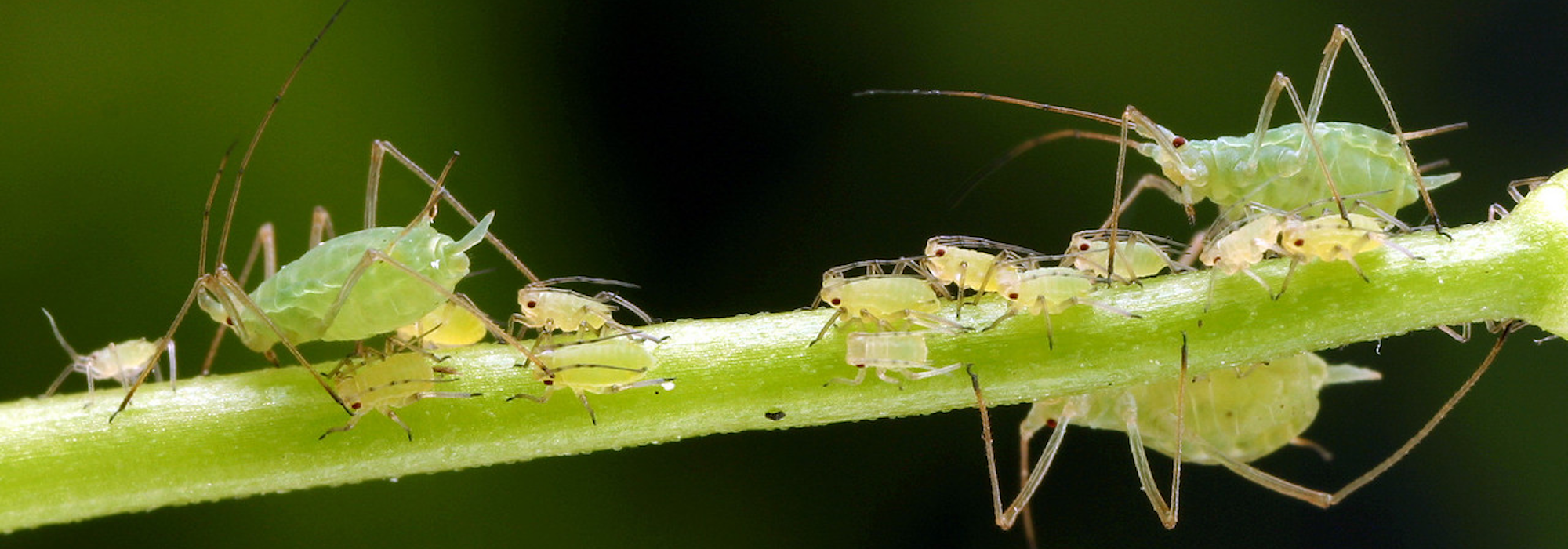Nancy A. Moran
Research
CURRENT RESEARCH
PAST RESEARCH
- Elucidating the molecular bases of species interactions in host-associated bacterial communities
- Role of Gut Microbiota in Honey Bee Health
- Coevolutionary dynamics in an obligate insect symbiosis
- Colonization by a Co-evolved Gut Community
- Dual Obligate Intracellular Symbionts
- Control of Bee Behavior by Stably Engineered Gut Microbial Communities
- Dimensions of Biodiversity: the Gut Microbiota of Bees
- Environmental Genomics of Symbionts in Pea Aphids
- Genomics of Bacterial Symbionts of Plant Sap-Feeding Insects
- Biocomplexity in the Environment
- Bacterial Endosymbiont Diversity in Drosophilla
- Biocomplexity of Symbiotic Bacteria
- Genomic Evolution of Buchnera
- Evolutionary Dynamics of Endosymbiont-Borne Adaption on Aphids
- Molecular Phylogenetics of Sternorrhyncha
- Phylogenetics of Aphids
- Genetically Variable Complex Life Cycles in Heterogeneous Environments
PAST Research Projects

Collaborative Research: Genomic Evolution in the Endosymbiotic Bacteria (Buchnera) of Aphids
(PI is Nancy Moran)
Many invertebrates contain specialized intracellular bacteria that are transmitted from mother to offspring in eggs and that persist in host lineages for millions of years. Typically, animal hosts and bacteria are unable to live apart, a situation that has slowed genetic characterization of symbiotic bacteria. The current project extends a previous collaboration, between an insect biologist and a bacteriologist, which has exploited modern molecular methods to characterize individual genes in symbionts of aphids. These bacteria have undergone genetic modifications that improve their ability to provide hosts with amino acids that are required for growth and reproduction. The new research is designed to address the question of how symbionts differ from related nonsymbiotic bacteria in overall genome characteristics. The dynamics of genome structure in aphid symbionts will be analyzed using newly developed molecular methods for determining sizes of large chromosomal fragments and for determining chromosomal locations of specific genes in symbionts from several aphid hosts of known relationships. In addition, rates of evolution of specific genes will be determined for pairs of symbionts with known dates of divergence. These results will be compared to corresponding information, from genetic databases, for closely related nonsymbiotic bacteria.
The symbionts of aphids possess some distinctive genetic traits that appear to represent a general syndrome in intracellular bacteria, including both beneficial symbionts of agricultural pests and pathogenic bacteria infecting humans, other animals, and plants. These characteristics include a reduced number of genes and reduced genome size, faster rates of genetic change over time, and biased composition of DNA molecules. Thus, the proposed investigations will increase understanding of a genetic syndrome that encompasses a variety of agriculturally and medically important bacteria. The additional knowledge of the basic biology of these organisms could contribute to new methods of controlling both agricultural pests and/or agents of disease.